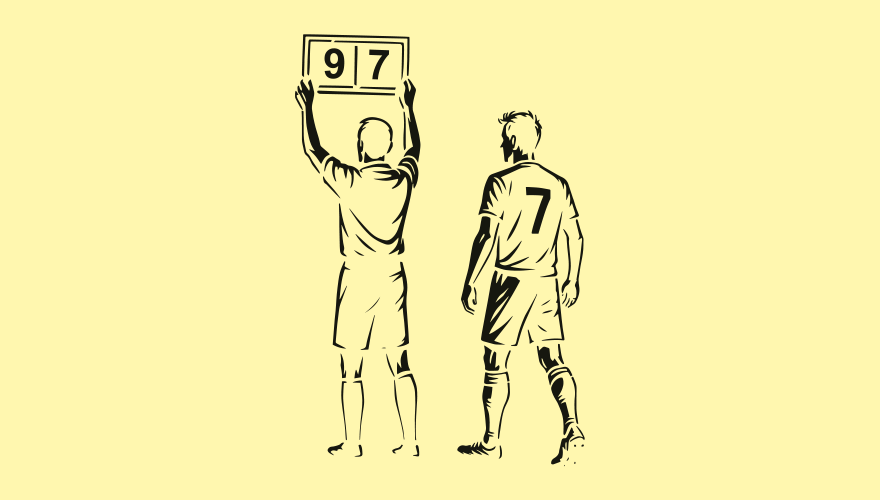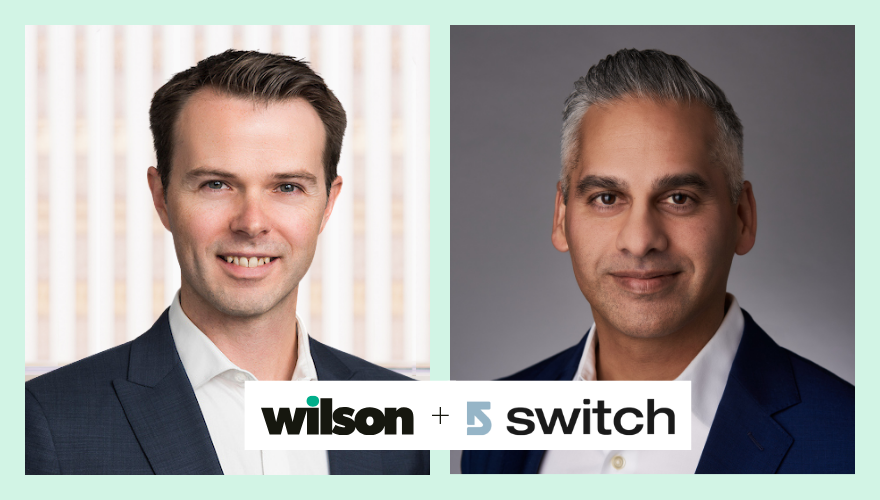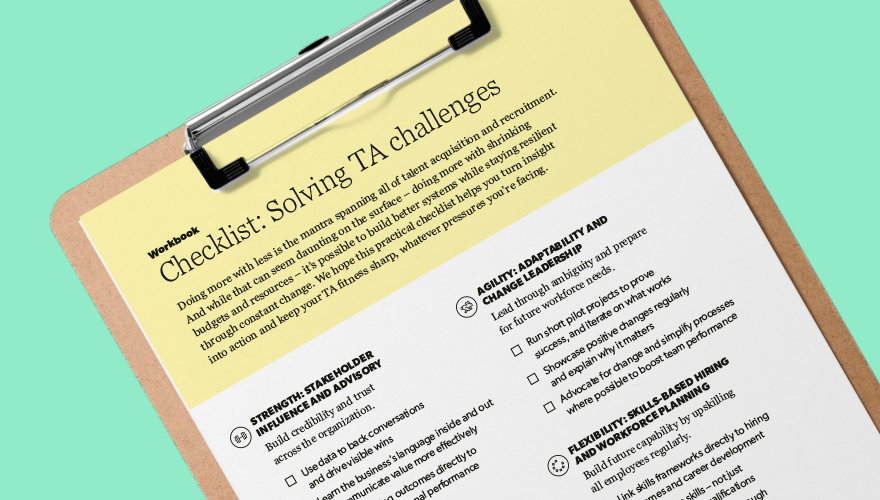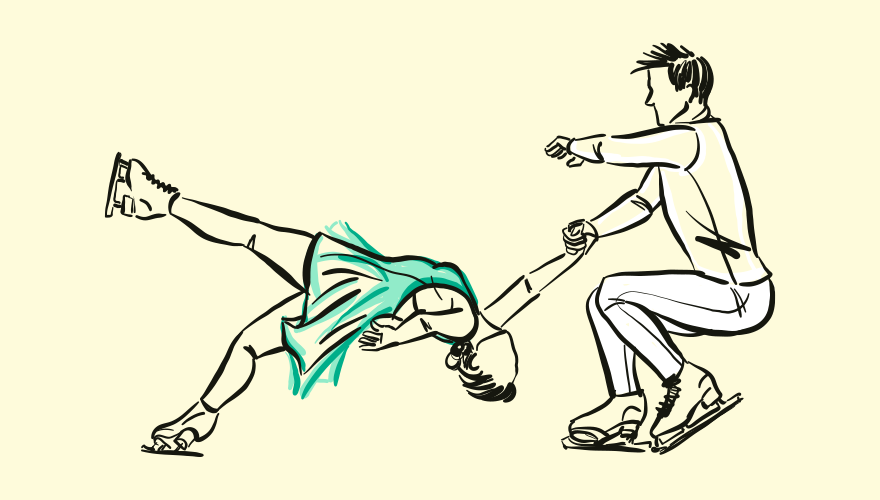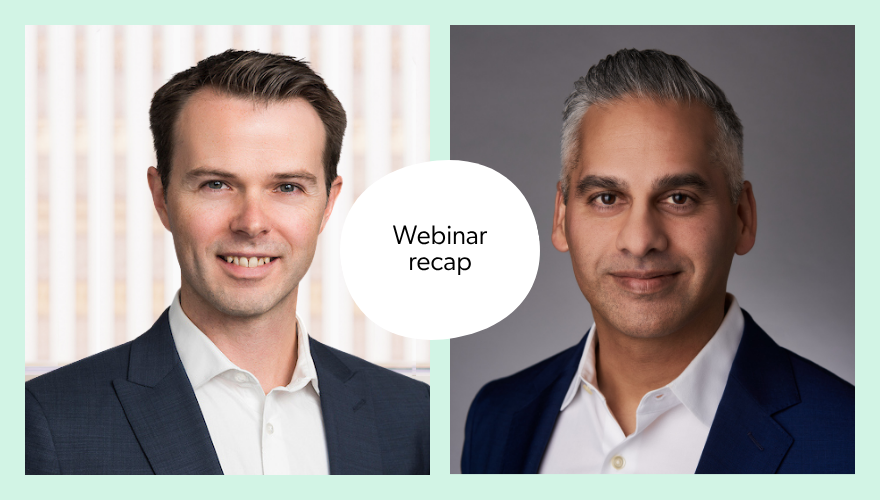Blog
From order-taker to strategic talent architect: Evolving the TA function for a new era

Q&A with Julia Levy, Talent Acquisition leader
With a career that spans recruiting, operations, technology, and employer branding, Julia Levy has worn many hats in talent acquisition, and reinvented the role each time. Here, she reflects on how the role of TA is shifting, how leaders can deliver value in resource-constrained environments, and why the future of TA is both more complex and more exciting than ever.

Julia Levy
Talent Acquisition Leader
Q&A with Julia Levy, Talent Acquisition Leader
With a career that spans recruiting, operations, technology, and employer branding, Julia Levy has worn many hats in talent acquisition, and reinvented the role each time. Here, she reflects on how the role of TA is shifting, how leaders can deliver value in resource-constrained environments, and why the future of TA is both more complex and more exciting than ever.
Julia, how has the role of the TA leader evolved over the past couple of years?
There’s been a real shift from being a service delivery leader to becoming more of a strategic workforce architect. It’s no longer just about filling roles quickly or measuring time-to-fill. Those are table stakes. TA leaders are being asked to step into business conversations – understanding strategy, workforce plans, and skills needs before the hiring even starts.
In the best cases, we’re embedded early: advising on talent availability in new markets, helping to shape org design, and guiding buy/build/borrow strategies. It’s about delivering market intelligence and strategic insight, not just resumes.
What’s helped you earn that seat at the table?
A lot of it comes down to business acumen. That means studying your company’s P&L, your competitors, and macro trends. It means reading annual reports, understanding market dynamics, and speaking the same language as your CFO or COO.
The other part is showing up and contributing value. Sometimes, just being in the room is a start. But then you need to earn your spot by connecting the dots: using your research, bringing insights, and helping the business think differently. That’s how TA moves from order-taker to advisor.
And what skills have been most critical to your success as a TA leader?
There are three big ones:
- Business and financial acumen: You have to understand how your company runs, how it makes money, and how talent connects to growth.
- Data storytelling: Everyone has dashboards. But if you can’t explain the “so what,” it’s just noise. You need to connect metrics to strategy and outcomes.
- Change communication: If you want to push the status quo, you need to bring people with you. That means explaining the why behind every change and managing the emotions that come with it.
You’ve also talked about upskilling teams to become talent advisors. How do you approach that?
At one previous company, we rolled out a full Talent Advisor development program, which was a mix of training and hands-on content with a focus on recruiting best practices, influencing, communication and business acumen. Separately, we also launched candidate experience training for all hiring managers to improve alignment and collaboration throughout the process. The results were amazing. But not every organization is ready for that shift. Some hiring managers still want you to just “go get me a candidate.”
It takes education, patience, and proof. Show them what changes when TA is truly consultative: faster time-to-hire, better-fit candidates, improved retention. And make the case for investing in that capability across the team.
How have you managed the “do more with less” challenge?
In short, creativity and negotiation.
On the vendor side, I’ve learned to negotiate hard. I am not embarrassed to ask for a larger decrease in costs. If a vendor wants a 10% increase, I want 10% more product and value. And I’ve gone to partners during tough times and said: “Here’s our financials and/or budget – what can we do?” Honest conversations lead to better partnerships.
And then there’s automation and AI. I’m cautious about where AI touches decisions, but there are huge opportunities to remove manual work – scheduling, summarizing interviews, streamlining screening – so recruiters can focus on strategy.
You don’t need a million tools. Sometimes a single, integrated platform that’s ‘good enough’ delivers better adoption and visibility than a scattered best-in-breed stack.
You’ve worked across a variety of industries and TA tech ecosystems. What’s your view on how employer brand plays into all this?
In a crowded market, differentiation matters more than volume. Anyone can say they care about people. But your candidates believe it when they hear it from your employees.
That’s why I love employee storytelling…quick, authentic videos where people share real experiences. It builds trust, showcases culture, and helps candidates self-select in or out. It’s not just about marketing, it’s about creating relatable, inclusive touchpoints that attract the right talent.
How do you connect TA work to broader business outcomes?
It starts with co-creation across HR. You can’t deliver talent impact in isolation, you need comp, benefits, systems, and business partners aligned.
A good example: at one company, we worked with HR and the business to remove degree requirements from most jobs. It opened up new talent pools, improved time-to-productivity, and even allowed us to open a new facility three months early, generating real business value. That’s the kind of impact you can deliver when TA is seen as a growth enabler, not just a cost.What trends are you watching in the TA space right now?
- AI and automation: The rise of AI-powered jobseekers means recruiters will need tools, too. It’s about freeing people up to be strategic, rather than replacing them.
- Skills-based hiring: We’re moving toward a world where skills matter more than experience, but it’s messy. Resumes and job descriptions aren’t built for this. Systems will need to evolve.
- Human and machine collaboration: The differentiator will be leaders who know how to safely, ethically and effectively blend tech with human insight.
Finally, how do you see the role of TA, and the TA leader, evolving over the next year or two?
It’s going to get more complex. But that’s also where the opportunity lies. The organizations that win will be the ones where TA isn’t on the sidelines, it’s embedded in business planning, growth strategy, and cultural development.
The people are the product. And TA leaders who can bridge talent and business priorities will be essential to driving the future of work.
Dive into more actionable insights
Modernizing talent acquisition requires an actionable approach to technological change, budgetary constraints, and strategic workforce planning. Read more about how to stay future ready from our content series.
